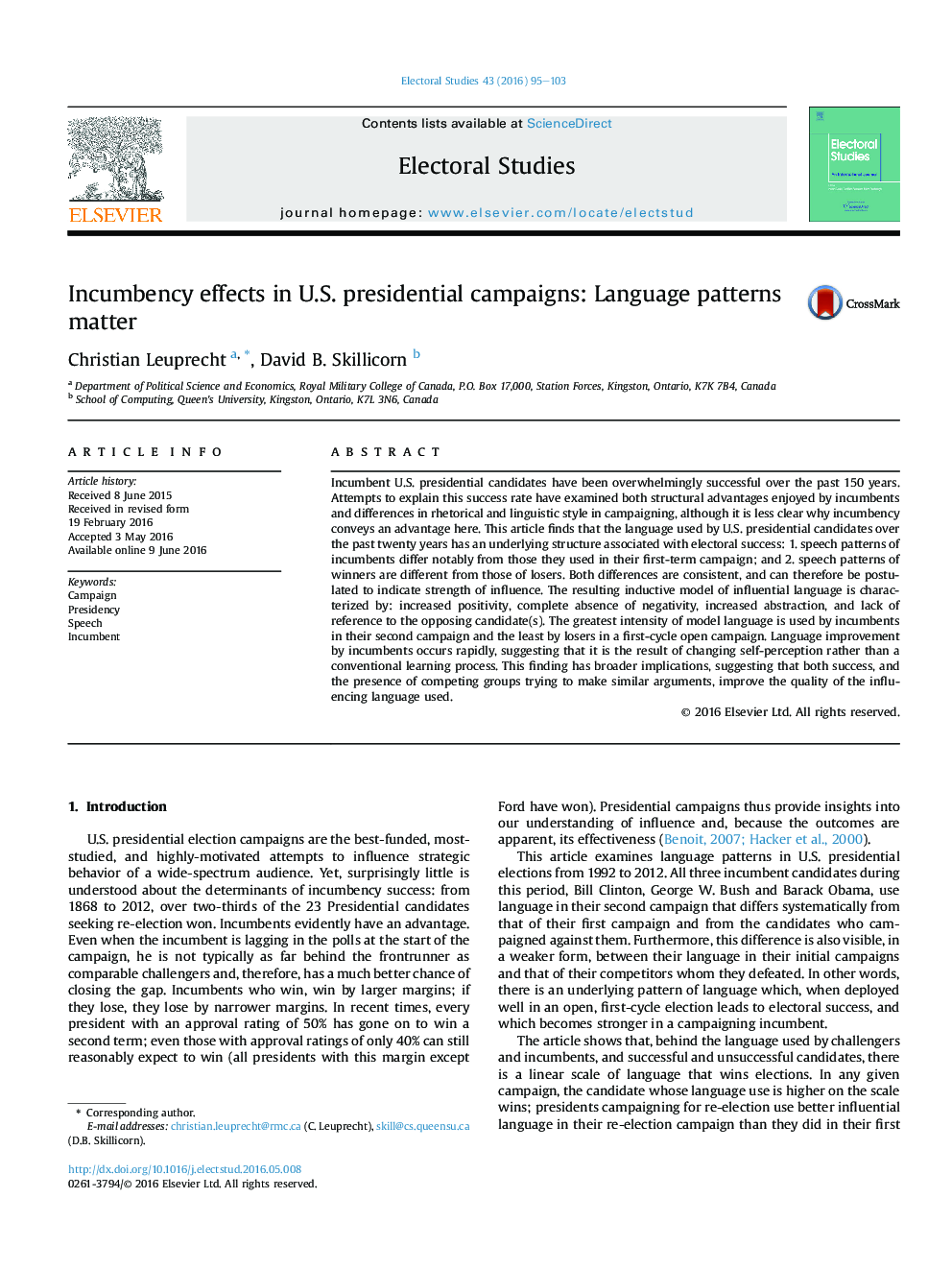| Article ID | Journal | Published Year | Pages | File Type |
|---|---|---|---|---|
| 7463557 | Electoral Studies | 2016 | 9 Pages |
Abstract
Incumbent U.S. presidential candidates have been overwhelmingly successful over the past 150 years. Attempts to explain this success rate have examined both structural advantages enjoyed by incumbents and differences in rhetorical and linguistic style in campaigning, although it is less clear why incumbency conveys an advantage here. This article finds that the language used by U.S. presidential candidates over the past twenty years has an underlying structure associated with electoral success: 1. speech patterns of incumbents differ notably from those they used in their first-term campaign; and 2. speech patterns of winners are different from those of losers. Both differences are consistent, and can therefore be postulated to indicate strength of influence. The resulting inductive model of influential language is characterized by: increased positivity, complete absence of negativity, increased abstraction, and lack of reference to the opposing candidate(s). The greatest intensity of model language is used by incumbents in their second campaign and the least by losers in a first-cycle open campaign. Language improvement by incumbents occurs rapidly, suggesting that it is the result of changing self-perception rather than a conventional learning process. This finding has broader implications, suggesting that both success, and the presence of competing groups trying to make similar arguments, improve the quality of the influencing language used.
Keywords
Related Topics
Social Sciences and Humanities
Social Sciences
Geography, Planning and Development
Authors
Christian Leuprecht, David B. Skillicorn,
